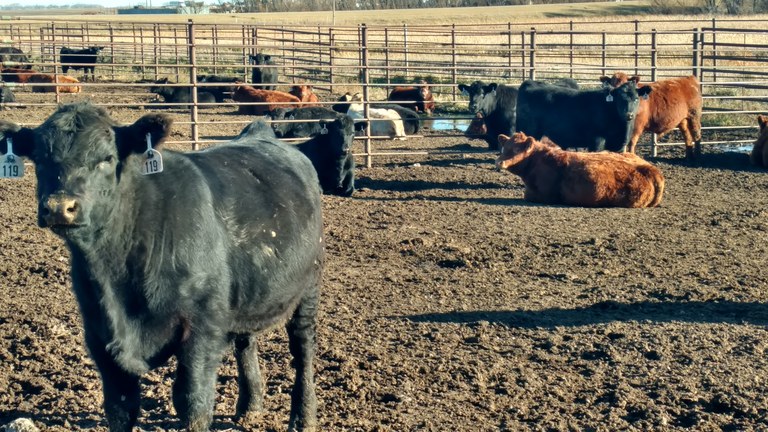Sick Calves? Don't wait to get a VFD.
It’s weaning time. Add weather changes that prelude to winter and the extra stress can lead to sick calves.
Cattle producers are well aware of the signs of a sick calf – depressed, not coming up to eat, not mingling with other cattle, droopy ears, snot hanging from their nose, and fever. These are the signs of calves that are visually sick. Since cattle and sheep are predated animals, they tend to hide the symptoms of being sick…until they are really sick.
That’s why the saying ‘a sick sheep is a dead sheep’ is somewhat true since by the time the sheep gives clear signs its sick (they hide it very well) – it’s very sick and recovery is not likely.
Cattle are more likely to show that they are sick, giving the caretaker time to individually help that animal. Generally, after a fever is confirmed with a rectal thermometer, sick calves are provided an injectable antibiotic and a pain reliever for individual therapy.
From a feed yard perspective, calves usually get sick a few days to a few weeks after arrival. Newly weaned calves, calves co-mingled with non-herdmates, and calves hauled and shipped for several days have extra stress. Add in a winter storm and the potential for sick calves increases drastically.
Calves that show symptoms of being sick need immediate medical assistance. However, the calves that are hiding symptoms have already been exposed to a likelihood of sickness, and under stressful condition such as a cold weather storm, may become sick. In this case, treating all of the calves in the pen might be indicated.
Mass treatment of cattle with antibiotics is referred to as ‘metaphylaxis treatment’. This can be accomplished by either injecting each calf with an antibiotic or putting an antibiotic in the feed.
Feeding antibiotic works well when calves – that are at high risk of getting sick – are still eating. Once a calf shows symptoms, the calf isn’t eating much and will not consume enough antibiotic.
Rules Have Changed
To purchase an antibiotic to be added to the feed requires a VFD – Veterinary Feed Directive. The VFD has to be written by a veterinarian. The VFD needs to be written, emailed, or faxed to the feed supplier before the cattle caretaker can purchase the feed antibiotic.
Cattle producers need to visit with their veterinarian BEFORE they can purchase a feed antibiotic. Just running to town to get some ‘CTC’, ‘oxytet’ or sulfa for the calves isn’t an option anymore. Plan ahead and discuss treatment approaches with your veterinarian and get a ‘VFD’.
More information on the VFD an be found here: https://www.ag.ndsu.edu/publications/livestock/understanding-the-veterinary-feed-directive/v1719.pdf

Which calf is the sick calf?
Karl Hoppe, Ph. D.
karl.hoppe@ndsu.edu
Area Extension Livestock Specialist
Co-Coordinator of ND SARE


